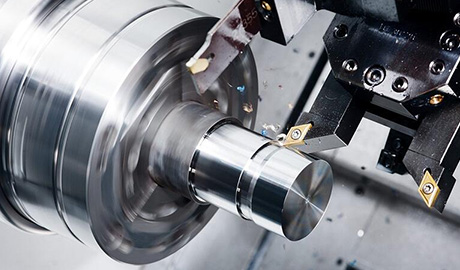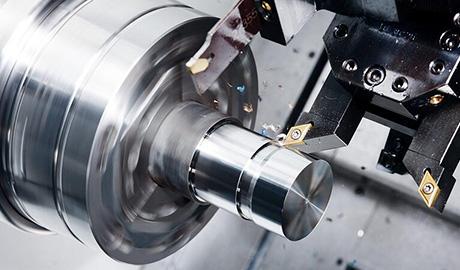Computer numeric control is the full name of the process that is commonly referred to as CNC machining. CNC is an acronym that stands for this full name. How Does 3D Printing Work offers a fabric coating removal system that can remove fabric coating from marketing components known as blanks or workpieces to stimulate the production of custom-designed parts through the utilization of monitoring and processing equipment. Blanks and workpieces are referred to as "marketing components."
Computer numerical control (CNC), on the other hand, describes strategic machinery that is capable of independently carrying out the functions of CNC equipment. The processing of materials such as plastic, wood, glass, and foam can be done in this manner. These are just some examples.

This can be seen in the contrast between subtractive manufacturing processes, such as CNC machining services, and additive manufacturing procedures, such as how single-use materials are moved into their intended form by 3D printing. For example, subtractive manufacturing processes include CNC machining services. The process of reduction, like the one described here, can lead to purity.
Subtractive processes typically involve the removal of fabric coatings from workpieces. This is done in order to generate bespoke patterns and compositions by the use of the process. In the meantime, additive protocols typically assemble panels of substances in order to create the configurations that are desired and replace commodity substances with patterns that are desired. This is done in order to create the patterns that are desired.
CNC machines have a high degree of automation, which enables the production of a wide variety of different configurations for the materials that they create. In addition to this, it has a score that is satisfactory, which lowers costs and ensures an improved level of maintenance.
a business category for CNC processing companies
In the world of used businesses, some examples include drilling, milling, and turning.
1. Engagement
For the purpose of creating openings in the workpiece during the course of this manufacturing process, multi-point drills are the preferred instruments to use. The rotary drill on the CNC drill is fed in a direction that is parallel to the plane on which the workpiece is located whenever the CNC drill is operating. Because of this, the size of the vertical stack that is produced is comparable to the diameter of the drill that is utilized in drilling technology.
2. Milling
Milling is a process that involves removing impurities from a product with the assistance of a cutting tool that has multiple points. The operation of milling is a mechanism. During the machining process, the substrate is fed into the machine in the same direction that the cycle of the cutting tool travels.
3. Making a Turn
During this entire process, which consists of removing fabric from a workpiece that is rotating, only a single piece of equipment is in use. Utilizing CNC lathe equipment allows for the removal of the peripheral fabric that is found along the coating of the rotating fabric.
How computer numerical control, or CNC, is used in today's modern technological world CNCs are used in the process of removing natural substances from workpieces by utilizing digital constraints that are programmed into the equipment to provide a pedagogy of what should be accomplished. This allows the equipment to provide a pedagogy of what should be accomplished.
Utilizing various computer numerical control (CNC) software techniques, such as computer-aided layouts, allows for the digital formulation of aspects to be completed by operators and inventors. In order to manage CNC equipment, codes that are derived from computer-aided manufacturing are utilized. Before the equipment begins to carry out its duties, these codes determine the methods to be used by the equipment and make the factory more efficient.
The benefits that computer numerical control (CNC) has brought to the manufacturing industry
This automated technology enables operations with minimal human intervention as well as greater repeatability and flexibility, which in turn enables factories to improve parameters such as accuracy, integrity, productivity, and cost-effectiveness. Creative Commons
As a direct consequence of these advancements, companies have come up with ideas like robotics, artificial intelligence, and the internet of things in an effort to lessen their reliance on manpower.
Discover more about the benefits of using CNC machining by reading this article.
in conclusion
The computer numerical control (CNC) technology has brought about fundamental changes in the world of industry, and an increasing number of businesses are adopting innovative business strategies to speed up the process of manufacturing components and prototypes. These changes are being brought about as a direct result of these changes. Incorporating robotics, artificial intelligence (AI), and the Internet of Things (IoT) will be necessary in order for computer numerical control (CNC) technology to progress to the next level.
